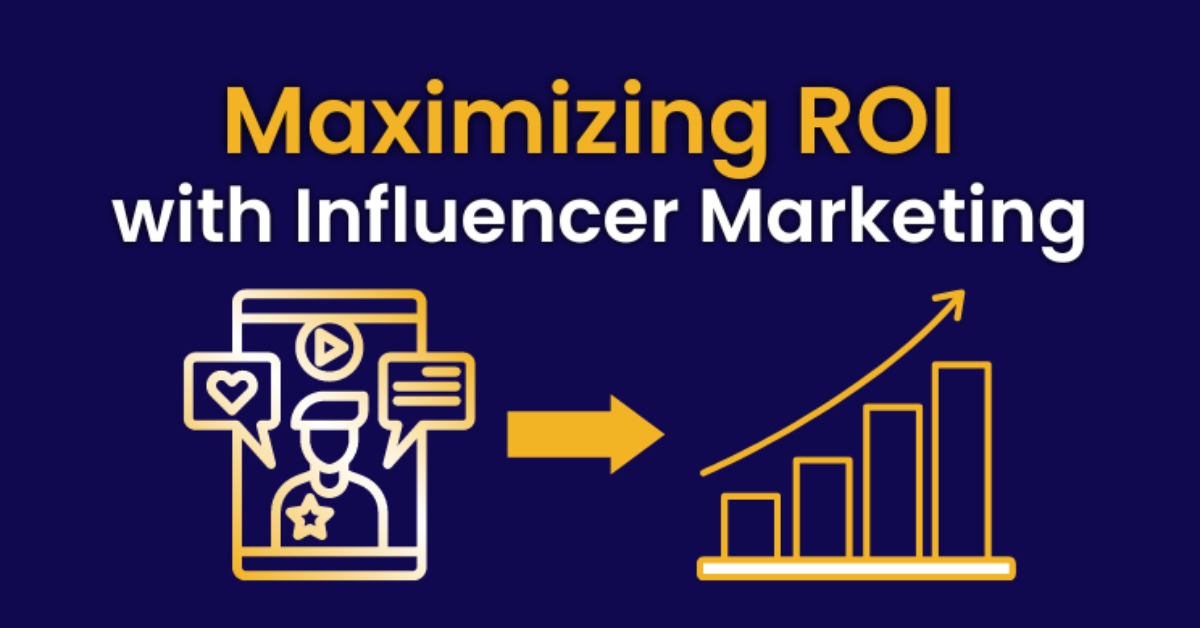
Maximizing ROI with Influencer Marketing
In the world of digital marketing, influencer marketing has emerged as a powerful tool for brands to connect with their target audience in authentic and engaging ways. However, achieving a strong return on investment (ROI) requires more than just partnering with popular influencers. From selecting the right creators to measuring success and avoiding common pitfalls, here’s a guide to help you maximize your influencer marketing efforts.
1. Why Influencer Marketing Works ??
Influencer marketing leverages the trust and connection influencers have with their followers. Unlike traditional ads, influencer content feels more personal and relatable, which helps:
?? Example: A skincare brand collaborates with a beauty influencer to demonstrate product benefits in real-time, driving immediate interest and sales.
2. Choosing the Right Influencers
The success of your campaign hinges on selecting influencers who align with your brand and audience. Here’s how:
a. Define Your Goals ??
Before choosing an influencer, clarify what you want to achieve:
b. Look Beyond Follower Count ??
While it’s tempting to go for influencers with large followings, engagement rate and audience quality matter more.
?? Example: A fitness brand might opt for micro-influencers who actively engage with their followers rather than a mega-influencer with a less targeted audience.
c. Assess Content Quality and Brand Alignment ??
Review the influencer’s past content to ensure it aligns with your brand values and aesthetics.
3. Crafting a Winning Campaign
Once you’ve selected the right influencers, it’s time to plan and execute your campaign:
a. Set Clear Expectations ??
Outline deliverables, timelines, and campaign goals in a contract. Be specific about:
b. Encourage Creative Freedom ??
Influencers know their audience best. Allow them to create content in their unique style while ensuring alignment with your brand.
?? Example: A food brand might provide guidelines but let the influencer showcase the product in a recipe they genuinely love.
c. Track Campaign Progress in Real-Time ??
Use tracking tools and unique links or discount codes to monitor performance as the campaign unfolds.
4. Measuring Campaign Success
To maximize ROI, you need to track the right metrics. Focus on:
?? Tools to Use: Google Analytics, Sprout Social, or influencer-specific platforms like Aspire or Upfluence.
5. Common Pitfalls and How to Avoid Them
Influencer marketing can be highly effective, but it’s not without risks. Here’s what to watch out for:
a. Mismatched Influencers ?
Partnering with an influencer whose audience doesn’t align with your target market can lead to wasted resources.
b. Overly Promotional Content ??
Audiences value authenticity. Overly scripted or salesy content can lead to lower engagement and trust.
c. Lack of Performance Tracking ???♂?
Without proper tracking, it’s difficult to measure ROI and make data-driven decisions.
d. Ignoring Long-Term Relationships ??
One-off campaigns miss out on the benefits of building a long-term partnership with an influencer.
6. Success Stories: Brands Nailing Influencer Marketing ??
Conclusion
Influencer marketing offers immense potential to boost brand awareness, engagement, and conversions. By selecting the right influencers, setting clear goals, and tracking performance, you can ensure your campaigns deliver maximum ROI.
?? Have you used influencer marketing in your campaigns? Share your success stories or lessons learned in the comments!
#InfluencerMarketing #DigitalMarketing #ROI #BrandStrategy #SocialMediaMarketing #GrowthStrategy